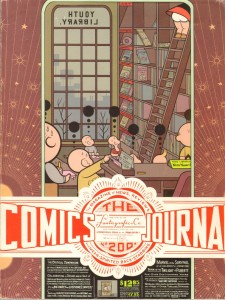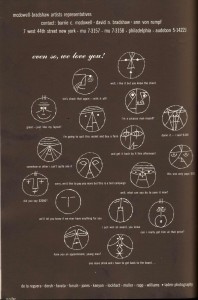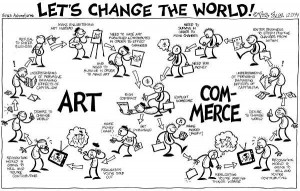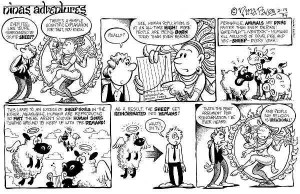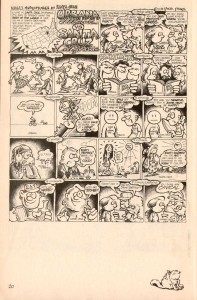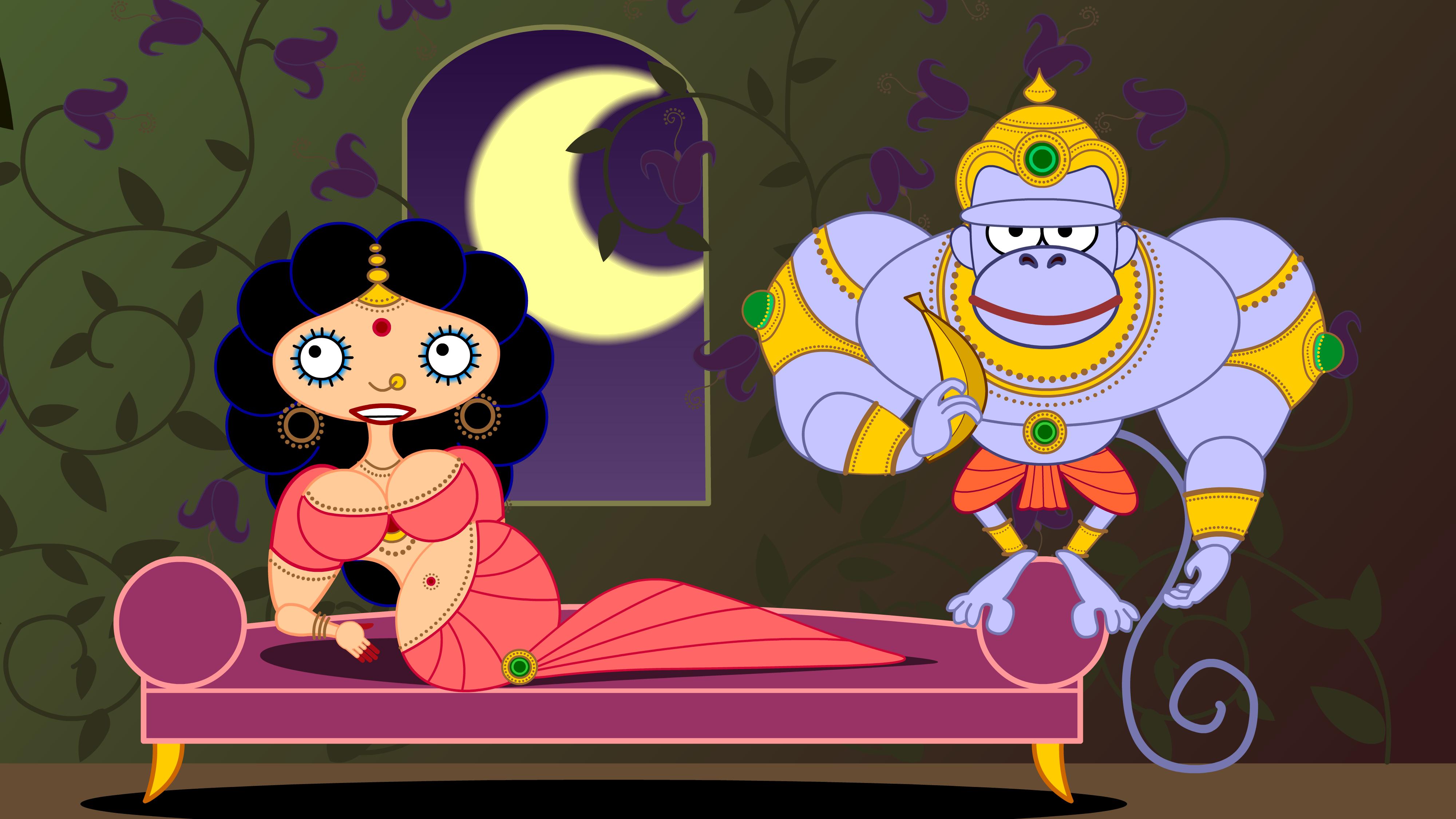The Criterion Collection DVD of Jean Cocteau’s The Blood of a Poet contains a transcript of a lecture given by Cocteau in January of 1932 at the Théâtre du Vieux-Colombier, on the occasion of the film’s premiere there. Cocteau begins by talking about critics.
First of all, I will give you an example of praise and of reprimand that I received. Here is the praise. It comes from a woman who works for me. She asked me for tickets to the film, and I was foolish enough to fear her presence. I said to myself: “After she has seen the film, she won’t want to work for me.” But this is how she thanked me: “I saw your film. It’s an hour spent in another world.” That’s good praise, isn’t it?
And now the reprimand, from an American critic. He reproaches me for using film as a sacred and lasting medium, like a painting or a book. He does not believe that filmmaking is an inferior art, but he believes, and quite rightly, that a reel goes quickly, that the public are looking above all for relaxation, that film is fragile and that it is pretentious to express the power of one’s soul by such ephemeral and delicate means, that Charlie Chaplin’s or Buster Keaton’s first films can only be seen on very rare and badly spoiled prints. I add that the cinema is making daily progress and that eventually films that we consider marvelous today will soon be forgotten because of new dimensions and color. This is true. But for four weeks this film has been shown to audiences who have been so attentive, so eager, and so warm, that I wonder after all if there is not an anonymous public who are looking for more than relaxation in the cinema. (This is followed by several hundred words about the film, demonstrating that it is more than relaxation. )
Contrast Cocteau’s response with Chris Ware’s letter about the issue of Imp devoted to his work (published in the subsequent issue).
You’ve done what most critics, I think, find the most difficult – writing about something you don’t seem to hate, which, to me, is the only useful service that “writing about writing” can perform. You write from the vista of someone who knows what art is “for” – that it’s not a means of “expressing ideas,” or explicating “theories,” but a way of creating a life or a sympathetic world for the mind to go to, however stupid that sounds. Fortunately you’re too good a writer to be a critic; in other words, you seem to have a real sense of what it is to be alive and desperate (one and the same, I think.)
Both reactions are, at root, comparisons of praise with reprimand. Yet, unlike Ware, Cocteau apparently finds the reprimand more interesting than the praise. It is noteworthy that the praise Cocteau receives from his female colleague – and mostly dismisses as a kind compliment – is virtually identical to Ware’s stated purpose for art. It is even more noteworthy that Ware’s ideal is so limited in scope that it is entirely inadequate to describe Cocteau’s proto-Surrealist film, which he indicated was created as “a vehicle for poetry – whether it is used as such or not.”
Of course, perhaps Ware was only trying to be nice to the guy who devoted a whole issue of a magazine to him. There is something a little over-the-top about his phrasing. I try to give him the benefit of the doubt even though that letter put such a bad taste in my mouth that I think of it every single time I see the name ‘Chris Ware,’ and it casts a shadow over my appreciation of his work. I’m almost convinced that deep down he actually does agree with himself – is it possible that he really is actually as insecure as his self-presentation? – but I’m willing to be dissuaded.
As published, though, Ware’s letter voices incredibly facile positions on the purpose and value of criticism and art, stating (in opposition not only to Cocteau but even to Gerry Alanguilan) that “writing about writing” can serve no useful purpose other than to praise. (He at least has the sense not to use the word “criticism” in this context.) The letter implies not only that Ware feels he has nothing to learn from critique but that critics who dissent with the Vision of the Artist are somehow bad, not “good writers,” dry and dessicated and less-than alive. This is an evisceration of the existence of criticism, exiling “writing about writing” to the commodity function of marketing and “Comics Appreciation 101” for books that reviewers like.
Unfortunately, Ware’s cover for TCJ 200, which also touches on this theme, only gives a little evidence in his defense: his library shelf appears to be a stack ranking of comics “genres,” with pornography and criticism at the bottom, and Art at the top – but nothing on the shelf.
The page is at least slightly ambiguous: there’s really nothing that mandates the shelf be read as a hierarchy rather than a pyramid with criticism and pornography as comics’ foundational pillars. It’s a very open depiction with both interpretations in play. Against the letter’s statement that art is not for “expressing ideas,” the cover expresses plenty of ideas: the juxtaposition of the “youth library” with a setting that is obviously adult (the high ladder, the call slips for closed stacks, the pornography); the ambiguous hierarchy/pyramid itself; the absence of anything much on the “art” shelf; the blurring of age – the cartoon characters depicted are all small children, but they’re behaving like adolescent boys, filling out call slips so Nancy will climb the ladder and they can see up her skirt –; and the resultant indictment of comics fandom and subject matter as stunted and age-inappropriate juvenilia. (Irrelevant aside: the periods in the window and on all of the signs really bug me.)
Yet despite that pretty interesting cluster of ideas, the blunt, indiscriminately ironic tone undermines them by flattening any possible value distinctions. That works strongly against any optimistic interpretation of Ware’s point. Gary Groth in the psychiatric help box is the most honest bit of the page, which verges past Ware’s routine self-deprecation into a scathing self-loathing that reaches beyond the individual to the group. This Ware would only join a club that would have him as a member so he could mock them for their bad taste. It is only funny if one has infinite patience with self-awareness as an excuse. Unless one gives Ware the benefit of the doubt to start with, this panel exudes little more than anger and contempt.
So is the letter too just another example of Ware’s incessant clanging self-deprecation? “My art expresses ideas, so it doesn’t quite measure up to the best purpose of art”? I don’t really think that’s the case.
Ideas take many forms, including images and certainly there’s nothing wrong with expression. The use of art by individuals to express themselves is of time-tested value. Ware’s letter elides the fact that his stated purpose, the “creation of a life or a sympathetic world for the mind to go to,” involves almost exclusively the expression of ideas about that life/world, despite his rejection of ideas as fair game. The letter’s point, though, is prioritizing the evocative experience of a visual “place” over the cerebral experience of ideas or theories, and Ware is far better at evocation than he is at ideas and theories.
So I think his art is consistent with his theory of art in the letter. Despite the frequent self-deprecation, he doesn’t really need praise artistically. He is perfectly well aware of what he does well. He rarely sets himself artistic tasks he cannot execute flawlessly.
More often than not, complexity in Ware’s drawing derives from the intricate realization and juxtaposition of ideas on his carefully crafted pages rather than from a complex interplay among the ideas themselves that is then, subsequently, represented on the page in an equally complex way. The repetitiveness of his aesthetic and the relentlessness of his irony further limit the range of conceptual material available to a critic. Although it’s possible to interpret the TCJ cover as ambivalent about criticism, the hint of ambiguity is just that – a hint. Ware does not tackle the layered ways in which the ideas interact. The concepts consequently never mature into a meaningful new insight: the piece is a meaningful representation of very familiar old insights. Overall the cover is smart, but not much more substantive conceptually than the best editorial cartoons. Unfortunately, this is often true for Ware’s other work as well.
Ware’s rejection of “ideas” and “theory” thus feels tactical, veiling the extent to which his art is not well served by analytic criticism, even of the most explicatory ilk. Ideas in Ware’s art lose a great deal when they are articulated. Spelled out in prose, without the grace of his talent for imagery, they lose their “life” and become bland. Since one of criticism’s essential actions is to articulate the interplay of ideas and hold it up to scrutiny, Ware’s work cannot consistently stand up against criticism that does not appreciate it. At the very least the analysis must appreciate his psychological angle – the particular voicing of interior life against exterior pressures that counts as story in much of his work. Praise that “gets” him can serve as explication for less savvy readers, but criticism that rejects him deflates his project entirely.
In the counterexample, Cocteau explained his film by embracing the very transience that had been leveled against him as a criticism. This was axiomatic for Cocteau: “listen carefully to criticisms made of your work,” he advised artists. “Note just what it is about your work that critics don’t like – then cultivate it. That’s the only part of your work that’s individual and worth keeping.” Even his stance toward criticism itself stands up to the scrutiny of articulation, as he was surely only half-serious: he wrote criticism himself, he counted among his friends the art critics Andre Salmon and Henri-Pierre Roche, and he was acquainted with Apollinaire (who, alongside Sam Delany, Salman Rushdie and Joan Didion, illuminates why Ware’s phrase “too good a writer to be a critic” is mere ignorance).
Ware’s letter, with its casually passive-aggressive muzzling of critique, is the very opposite of “listening carefully”: it’s a kinder, gentler playground bullying of the class brain. Cocteau’s contrasting approach, rich with confidence, recognizes how the relationship of artist and critic can be that of interlocutors. The conversation may happen in writing and the artist and critic may never actually speak to each other face to face, but criticism as such is inherently fecund. Critics model ways of talking back to art, and talking back increases and vitalizes the relationships among any given art object, the people who engage with it, and the culture in which it operates. It is precisely the thing that moves art beyond being merely the “expression” of an artist, toward a more ambitious function as a site for cultural engagement and debate. Critics and readers are also interlocutors; the critic is thus interfacial, and this triangulated conversation in many ways demarcates the public sphere. Artists who reject this conversation show contempt for their readers. They are, in contrast to Ware’s assertion, far more interested in self-expression than in any other purpose for art.
What I find most disheartening is not this disingenuousness with regards to expression, not that Ware discourages writers from writing criticism (we are a hardy bunch), but that he encourages contempt of writers who do write criticism and contempt of the modes of thought modeled by criticism by any readers and artists who pay attention to the opinions of Chris Ware. Regardless of his motives, Ware’s letter throws his not-inconsiderable weight behind an approach to art – and of engagement with art – that invalidates and forecloses thoughtful, cerebral engagement.
This kind of careless anti-intellectualism is not a philosophy of criticism. It shuts down several questions that are utterly essential for comics criticism: whether the existing critical toolkit, with its heavy emphasis on prose explication of illustrative examples, is in any way sufficient to capture the native complexity of comics, whether viable alternatives exist, and to what extent and in what ways it matters that translation to prose evacuates the complexity of many comics texts. (The fact that explication of Clowes’s work does not evacuate his complexity is an important argument against the knee-jerk assertion that complexity in comics is somehow entirely different in kind from that found in literature and film, but the point is surely open to debate.)
Criticism is the correct place to argue the merits of different ways of making conceptual meaning in comics, and that conversation is not really possible in “writing about writing” that attempts nothing beyond praise. But that conversation is absolutely necessary if comics are ever to respond to the challenge Seth articulated in Jeet Heer’s panel: “I guess it is a failing of the culture not to have recognized anything in comics, but it’s also a failing in comics, to have not presented much for them to recognize.”
I said in the beginning of this essay that Ware does not understand what criticism is for, and his cover art, in its typical bleakness and self-deprecation, dramatizes this limitation of his imagination. Criticism is the thing you need before you can have something on Ware’s top shelf, the one labeled Art. The one that, for Ware, is unsurprisingly empty.
Update by Noah: Matthias Wivel has a thoughtful response here. Also, the thread here was getting unwieldy and has been closed out; if you’d like to respond please do so over on the other thread.

